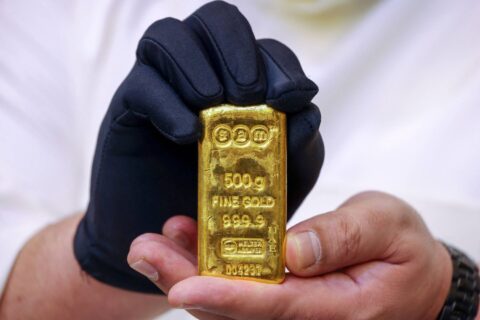Gold Price Performance Amid Economic Uncertainty has become a significant topic of discussion recently. Despite rising geopolitical tensions and economic concerns, gold (XAU/USD) has exhibited notable weakness. Recent events, such as conflicts in the Middle East, have impacted global markets, but gold prices have not responded as expected.
Geopolitical Tensions and Economic Conditions
Gold’s Safe-Haven Status Challenged
Historically, gold is considered a safe-haven asset during geopolitical crises. However, recent events, including Hezbollah’s missile attacks on Israel and the assassination of Hamas leader Ismail Haniyeh, have not bolstered gold price performance amid economic uncertainty. The metal’s typical appeal in such situations has not been evident.
Global Economic Pressures
The global demand environment has been weakened by rising interest rates from central banks. China, the world’s second-largest economy, faces challenges with low domestic and international demand. The Caixin Manufacturing PMI’s contraction to 49.8 in July underscores these difficulties. The Eurozone, particularly Germany, is also struggling, leading to tax relief measures to counteract economic slowdowns. Additionally, slowing US economic growth has raised concerns about a broader economic slowdown.
US Economic Indicators and Market Reactions
ISM Services PMI Provides Limited Relief
Despite fears of a US slowdown, the ISM Services PMI for July offers some optimism. The PMI rose to 51.4, indicating expansion in the services sector compared to the previous month’s 48.8. This data offers a ray of optimism in the midst of broader economic worries.
Daily Market Movements
Gold prices dropped below $2,400 during Monday’s American session due to profit-taking. The metal faced pressure while attempting to surpass previous highs above $2,480. Nevertheless, the long-term outlook for gold remains positive as US bond yields hit new annual lows.
Bond Yields and Interest Rate Expectations
Falling US Bond Yields Impact Gold
The 10-year US Treasury yields have fallen to 3.67%, with speculation of rate cuts by the Federal Reserve in September. Lower yields on interest-bearing assets reduce the opportunity cost of holding non-yielding assets like gold. Additionally, the US Dollar Index (DXY) has dropped to its March low of 102.60.
Anticipated Federal Reserve Rate Cuts
Traders expect a 50-basis point rate cut in September, with potential for over 100 basis points of cuts this year. Recent weak US economic data has fueled these expectations, raising doubts about whether the Fed can achieve a ‘soft landing’—a scenario where inflation is managed without causing a recession.
Labor Market and Manufacturing Sector
Weak Labor Market Signals
The July Nonfarm Payrolls (NFP) report revealed slower labor demand, with new payrolls at 114K, below estimates. The Unemployment Rate rose to 4.3%, the highest since November 2021. The ISM Manufacturing PMI also contracted to 46.8, reflecting a slowdown in the manufacturing sector.
Expectations for Emergency Rate Cuts
Expectations of emergency rate cuts by the Fed have increased. Chicago Fed Bank President Austan Goolsbee mentioned that all options, including rate changes, are considered. He assured that the Fed would address any economic deterioration promptly.
Technical Analysis: Gold Price Trends

Current Gold Price Performance
Gold price performance remains below $2,400, trading within a channel formation on a daily timeframe. The 50-day Exponential Moving Average (EMA) around $2,370 acts as support for the bulls.The 14-day Relative Strength Index (RSI) fluctuates between 40.00 and 60.00, indicating market indecisiveness.

Future Price Projections
A breakout above the all-time high of $2,483.75 could lead to new highs. Conversely, the upward-sloping trendline at $2,225, extending from the October 6 low, will serve as a crucial long-term support level.
For more updates on gold prices and market trends, visit Daily Gold Signal, and check out the Daily Gold Update for the latest news.





